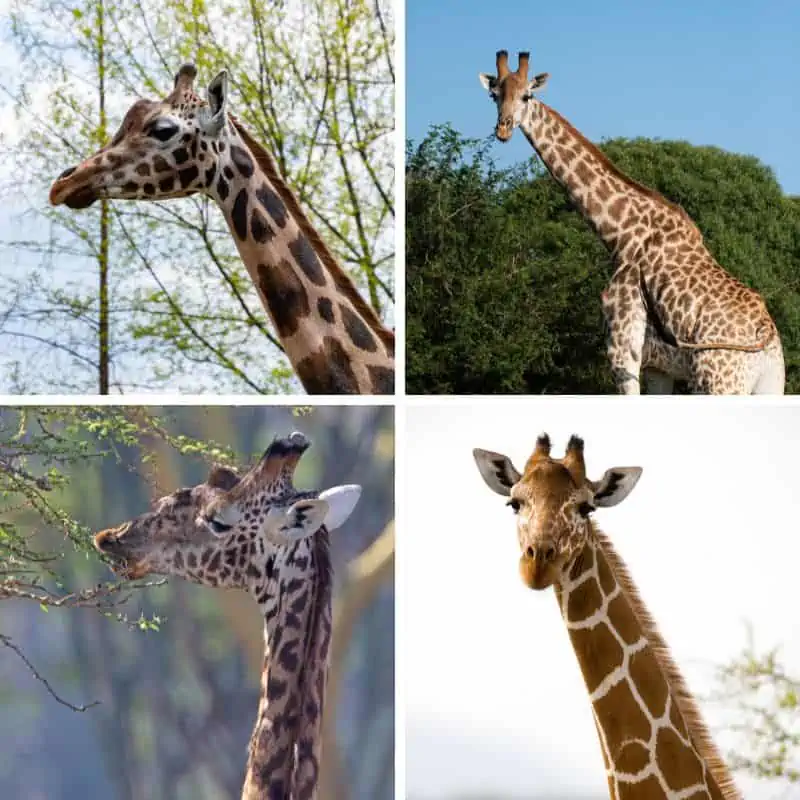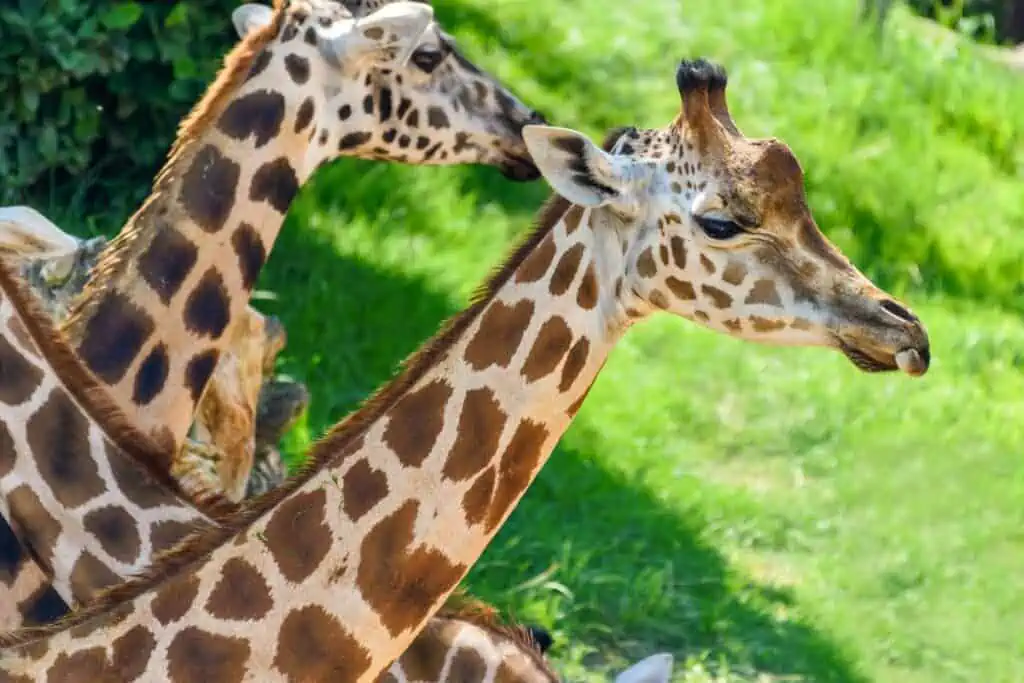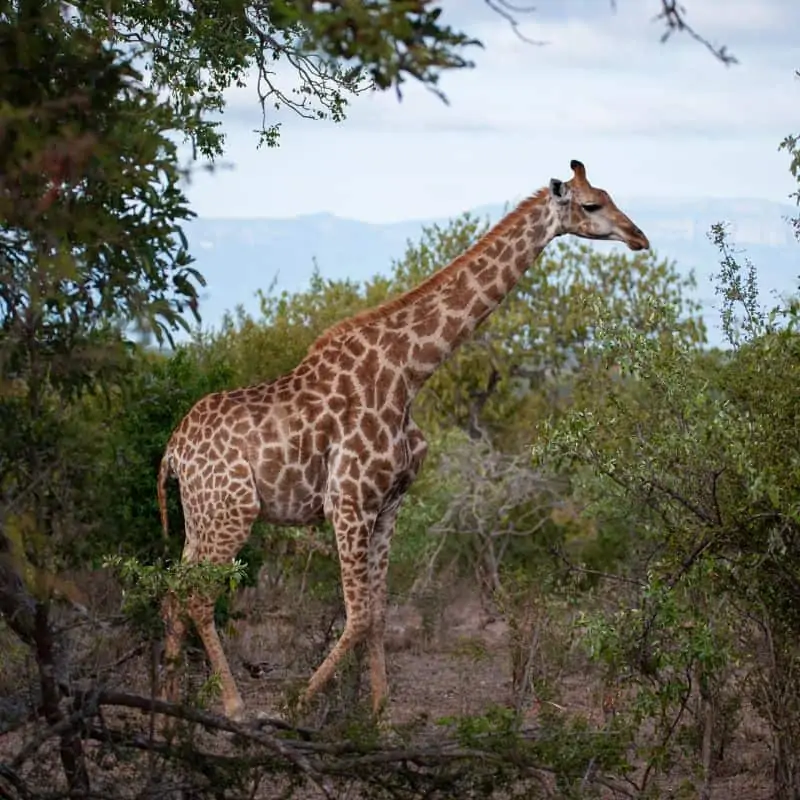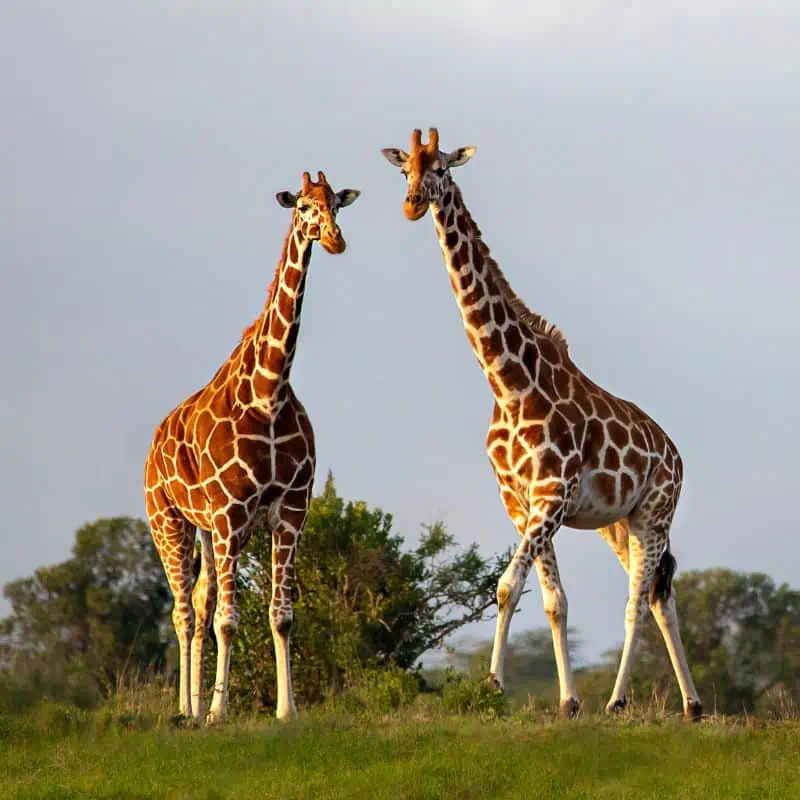The giraffe is one of the most well-known and recognized African animals. But did you know that there are more than one giraffe species?
The exact number of giraffe species is up for debate; the consensus is that there are four distinct species. These four species are the Northern giraffe, Southern giraffe, Masai giraffe, and Reticulated giraffe.
In this article, we will take a look at the four different types of giraffes and what sets them apart from one another.

How Many Species of Giraffe Are There?
While experts have narrowed the list down to at least four distinct types of giraffes, some believe there might be six, or even as many as nine, species of giraffe. So, why is there such disagreement on the matter?
The uncertainty comes from the different populations of giraffes that roam the plains of Africa. Giraffes are herd animals and mostly stick to their groups in other geographic areas.
Researchers have noticed that even when different groups encounter each other, little to no interbreeding occurs. This behavior strays from breeding habits between subspecies, which often intermingle.
This is one of the main reasons why some believe these different groups of giraffes are their distinct species.
The scientific community has identified separate mammal subspecies, differentiated mainly by their coat pattern and coloring. However, some researchers believe that specific subspecies should qualify as their own species.
Despite the ongoing debate, after a 2020 genome study, the accepted consensus is that there are four giraffe species: the Northern, Southern, Masai, and Reticulated giraffe.
Because giraffes are considered vulnerable on the endangered species list, with less than 100,000 individuals in the wild, the answer to this question becomes even more critical.
The Four Different Types of Giraffes
Northern Giraffe
The Northern giraffe is also referred to as the “three-horned” giraffe and is native to the northern half of Africa. There are thought to be fewer than 5,100 Northern giraffes left in the wild.
This type of giraffe has larger ossicones (the “horns” of a giraffe) than its cousins, and males have a third smaller ossicone in the center of their heads, hence the nickname “three-horned.”
Northern giraffes are the most endangered giraffe species and are primarily found in Kenya and Ethiopia, although they are also seen in the Democratic Republic of Congo and South Sudan.
The Northern giraffe tends to have a cream-colored coat with very bright, smooth-edged patterns that resemble interlocking geometric shapes.

The famous Rothschild giraffe falls into this category, although it has been more closely aligned with the Nubian subspecies. Many researchers believe it should belong to a species all its own.
The Rothschild giraffe was named after Walter Rothschild, the founder of the Tring Museum in Hertfordshire, United Kingdom, which houses one of the most well-known collections of stuffed mammals, birds, reptiles, and insects.
Northern Giraffe subspecies:
- Kordofan giraffe
- Nubian giraffe (with the Rothschild’s giraffe as an ecotype)
- West African giraffe
Southern Giraffe
The Southern giraffe includes around 17,000 individuals in its population. They primarily inhabit areas around the southern portion of the continent, including Zimbabwe and Botswana.
There are ongoing efforts to reintroduce this species to Mozambique, where the local government has taken steps designed to protect local wildlife populations.
The Southern giraffe has a beige-colored coat with a reddish shade to it. Their pattern is composed of rough star-like spots and usually covers both the legs and body.

Southern Giraffe subspecies:
- Angolan giraffe (also known as the Namibian giraffe)
- South African giraffe (also known as the Cape giraffe)
Masai Giraffe
The Masai giraffe has the largest population of all the giraffe species. Just under 33,000 individuals remain. Illegal poaching has contributed to the decline in the numbers of the Masai giraffe.
This species likely gets its name from the Masai Mara River in Tanzania, where the species is found. They are also common in Kenya.
The Masai giraffe is the largest giraffe species, making it the tallest land animal on the planet. They can weigh up to 4,250 pounds (1,930 kg) and reach up to 19 feet tall (5.8 m).
The coat coloring of the Masai giraffe is very distinct and typically darker-shaded than other giraffe types. The spots may appear crooked or distorted and almost look like stars.
The spots extend from their hooves to their head. Males have darker spots that get even darker with age.

Masai Giraffe subspecies:
- Masai giraffe (also known as the Kilimanjaro giraffe)
- Thornicroft’s giraffe (also known as the Luangwa giraffe)
Reticulated Giraffe
The Reticulated giraffe is often found in Ethiopia, Kenya, and Somalia, which has even earned this species the alternate name of the Somali Giraffe.
The remaining number of this giraffe species is around 8,000 individuals, and poachers have contributed to a drastic reduction in numbers over the last two decades. Kenya, especially, has worked to find and prosecute poachers to protect wild populations.
The reticulated giraffe has a coat that is more cream-colored, with spots that are bright, striking, and almost chestnut or reddish brown.
The pattern is made up of repeating, smooth-edged rectangles. The reticulated giraffe has a reddish-brown face that matches the color of its patterned spots.

Final thoughts on the different types of giraffe
Scientists initially believed that all giraffes originated from a single species, Giraffa camelopardalis, and had nine subspecies. Recent research has led to the opinion that there are four distinct species, the Northern, Southern, Reticulated, and Masai Giraffes, with an additional subspecies.
Today, the International Union for Conservation of Nature (IUCN) only officially recognizes one giraffe species and lists nine subspecies. The four species listed in this article are not formally recognized yet, but due to the research being reasonably new, it is only a matter of time.
The consensus among the scientific community has led to the acceptance of these four giraffe types as species of their own. And research continues on the issue, with conservationists and scientists working together to unravel the mystery of the great and noble giraffe.
